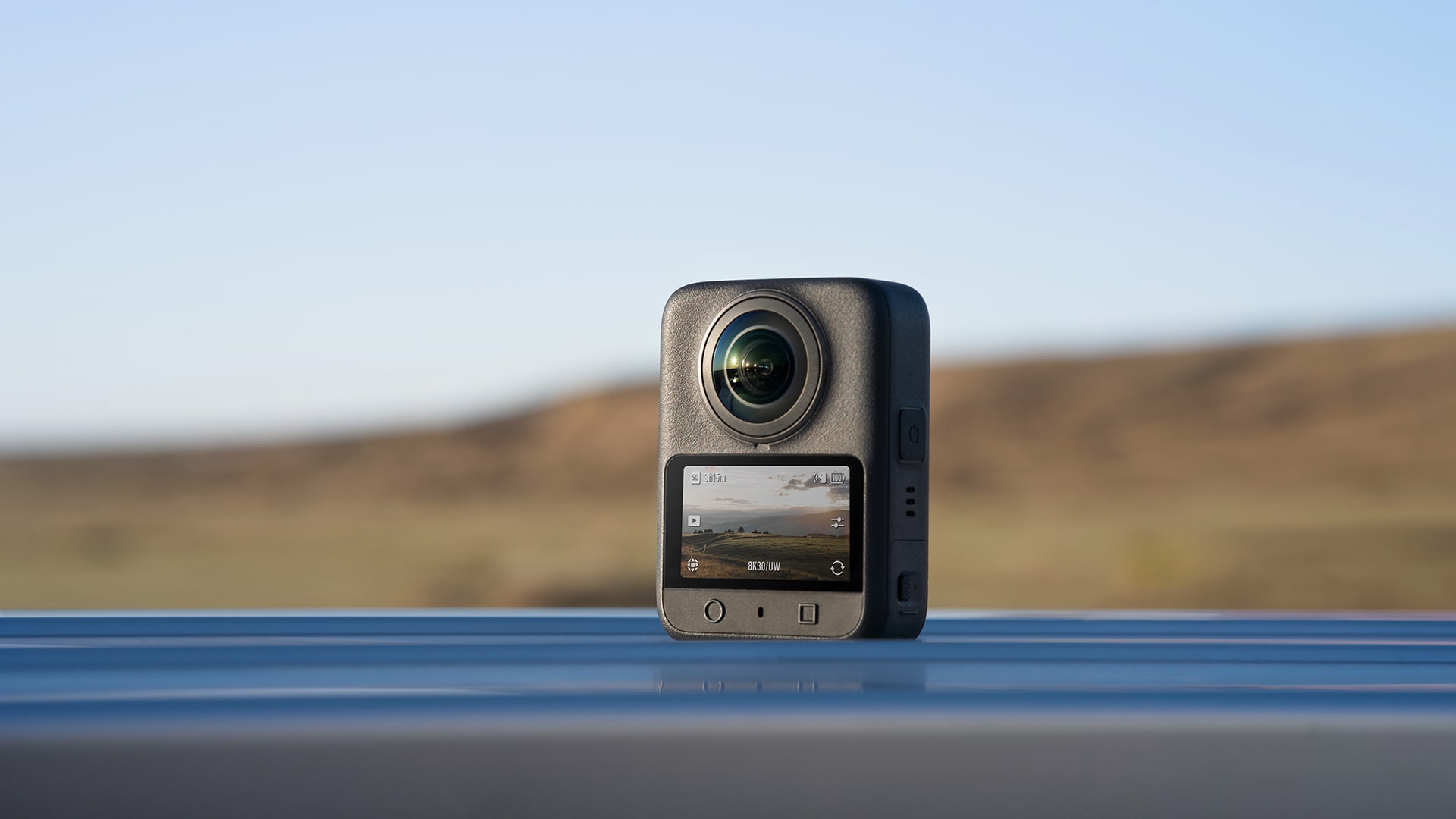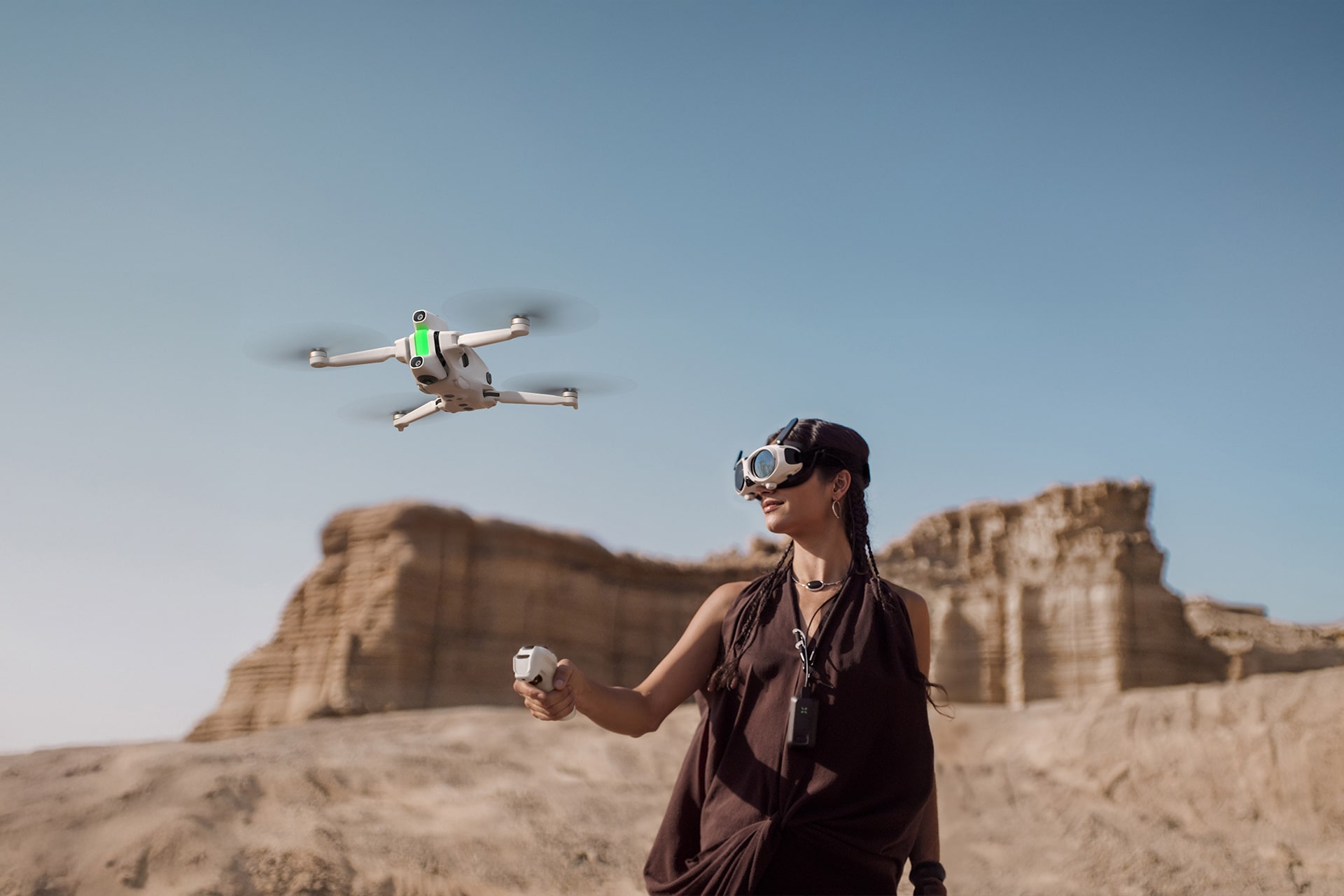Recently, the panoramic camera market has been shaken by what industry observers are calling a paradox, adding new uncertainty to an already heated race in consumer imaging.
Just days ago, third-party research firm Meritco released its 2025 global market report on the action and panoramic camera segments. The report found that DJI’s share of the global action camera market had risen steadily to 66%, placing it firmly at the top worldwide. DJI’s debut panoramic camera, the Osmo 360, captured 43% of the global market within three months of launch, shaking up the competitive landscape.
But only a few days later, Frost & Sullivan published its own findings, telling a very different story. According to its report, DJI’s share of the panoramic camera market was just 17.1%, and its action camera revenue was estimated at nearly half of Meritco’s figure. The confusion deepened when, as media outlets reported, Frost & Sullivan removed the report twice after publication, citing the need for internal data verification.

In response to the conflicting data, 36Kr interviewed a source inside DJI, who said the company conducted an analysis of both firms’ data models. According to the source, DJI estimated that its third-quarter panoramic camera shipments exceeded 300,000 units, adding that Meritco’s report drew on data from listed companies, verified sales from major e-commerce platforms, and large-scale social media analysis.
To further verify the figures, Insta360’s prospectus filings were reviewed. According to its 2024 annual and semiannual reports, Insta360’s revenue for the second half of 2024 totaled RMB 1.65 billion (USD 231 million), calculated by subtracting its first-half revenue of RMB 1.27 billion (USD 177.8 million) from the full-year total of RMB 2.92 billion (USD 408.8 million). With an average selling price of RMB 2,641 (USD 369.7) per unit, that equates to roughly 620,000 units sold, which is broadly consistent with Meritco’s estimates.
Insta360 also addressed the data dispute in its latest financial results briefing, warning that the accuracy, completeness, and authority of some third-party data cannot be independently verified, and advising investors to be mindful of related risks.
Behind the conflicting figures lies a deeper contest over narrative control. Competition is no longer limited to products or sales but extends to the standards and perceptions that define the industry.
Backstory of the blitz
The rapid rise of DJI’s Osmo 360 and Osmo Nano may look like a blitz, but it stems from years of patient technological buildup. The commercial breakthrough was no fluke. It marked the culmination of six years of steady exploration in the action camera segment.
What appeared to be speed was actually the result of methodical iteration. The compact design and stability of the Osmo 360 and Nano emerged from long cycles of trial, error, and refinement.
DJI’s rise from market entrant to leader follows a clear trajectory. In 2019, the first-generation Osmo Action introduced a front-facing color screen and advanced stabilization algorithms, addressing user frustrations and carving out space in a market long dominated by GoPro. Even then, DJI was asking a forward-looking question: what would a truly effortless action camera look like?
Over the next few generations, DJI refined its answer. The Osmo Action 2, released in 2021, abandoned the all-in-one design in favor of a modular magnetic snap-on system, enabling quick component swaps and expanded versatility.
But the ambitious design tested the limits of available hardware. Overheating during 4K120 recording prompted negative feedback, forcing DJI to rethink its priorities. The setback became a turning point, leading to a more pragmatic strategy for the Osmo Action 3 and 4 models, which resolved stability issues during extended use.
Instead of backing away from innovation, DJI found balance between cutting-edge design and everyday usability. By 2023, the Osmo Action 4 had achieved market share parity with GoPro. Two years later, the Osmo Action 5 Pro marked a breakthrough with a refined internal system for quickly turning user feedback into tangible features. The new line integrated accessories, quick mounts, and audio systems, solidifying DJI’s comeback.

Across this six-year journey, one principle stands out: real innovation lies not in flashy features but in sustained, systematic improvement. DJI’s long-term commitment has produced not just individual devices but a cohesive, user-friendly ecosystem that’s harder to replicate than any single spec sheet.
Compounding power of an ecosystem
DJI’s growing ecosystem has enabled it to expand across imaging scenarios. From the compact Osmo Nano to the panoramic Osmo 360, each product benefits from the same unified platform.
The Osmo Nano represents a matured version of DJI’s magnetic modular design, combining portability with flagship-level imaging performance while resolving earlier issues such as overheating and fragility. Four years after the Action 2’s experimental design, users finally have a truly refined magnetic mounting experience.

The Osmo 360 shares batteries and accessories with the Action series, while the Nano reuses DJI’s flagship image sensor. From device interfaces to post-production tools like DJI Mimo and DJI Studio, the ecosystem now offers a seamless end-to-end experience.
This evolution reflects DJI’s shift from solving isolated user problems to building universal solutions that span devices and use cases. Its ecosystem now bridges professional-grade performance with mass accessibility.
The synergy not only enhances user experience but also reduces R&D and supply chain costs. Leveraging its manufacturing expertise from drones, DJI has gained an edge in component design and production efficiency. Those savings have been passed on to users, broadening access to advanced imaging tools and creating a virtuous cycle of adoption and iteration.
Redefining the category
When DJI entered the panoramic camera market with the Osmo 360, it faced the classic tradeoff between image quality, size, and power consumption.
Most existing cameras used rectangular smartphone CMOS (complementary metal oxide semiconductor) sensors to capture circular images, wasting up to a quarter of the sensor area. Refusing to accept that limitation, DJI persuaded suppliers to co-develop a square CMOS sensor, a decision that fundamentally changed the technology equation. The new design increased sensor utilization by 25% and enabled native 8K panoramic video capture without upsampling, resolving one of the market’s major pain points.
The Osmo 360 also brought ten-bit D-LogM color, advanced stitching algorithms from DJI’s drone division, and smart tracking, all in a handheld device priced at RMB 2,999 (USD 419.9). The result was a dramatically lower entry barrier for professional panoramic creators.
The product’s quick success validated DJI’s approach. By contrast, GoPro’s dependence on a single product line led to a USD 432 million loss in 2024 and continued decline in 2025.
But DJI isn’t stopping there. As the drone market matures amid tighter regulation and product sameness, users increasingly seek creative tools that are safe, portable, and shareable. DJI’s rumored Avata 360, reportedly in development since 2022, points in that direction. Leaked images suggest it combines the Avata’s ducted propeller design and DJI O4 transmission system with the Osmo 360’s dual fisheye lenses and square CMOS. Such cross-domain innovation could create an entirely new imaging category.
The outlook
From action cameras to panoramic cameras and soon, perhaps, panoramic drones, imaging has become central to how people document and share their lives.
For ecosystem-driven players like DJI, each milestone reflects not luck but the predictable results of long-term investment, sharp market insight, and supply chain control.
From the beginning, DJI has viewed imaging not as cold hardware but as a bridge between technology and emotion. Photography, after all, is as much about perception as pixels. It captures fleeting moments of connection—the kind that makes travelers pause, frame a scene, and resist the fear of missing out.
DJI’s journey through the camera market has been a continuous rewriting of industry norms, translating its aerial expertise to land and sea, and shifting competition away from specs toward cohesive, user-centered ecosystems. In doing so, it has not only fueled its own growth but also offered the industry a lesson in long-term thinking.
DJI’s trajectory also proves that a top-tier tech company never settles for riding the current wave. Every time it sets sail, its goal is the same: to create the next one.
KrASIA Connection features translated and adapted content that was originally published by 36Kr. This article was written by Xiao Xi for 36Kr.

